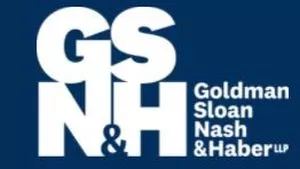
Official Marks
Last month we discussed prohibited marks. One type of prohibited mark is called an "official mark". These marks can be a problem for brand owners because of their nature.
What are They?
The term "official mark" refers to a mark adopted and used by a public authority for goods or services, in Canada, and for which public notice has been given under the Trademarks Act. There are a large number of these marks and many of them are of a commercial nature.
How are they Obtained?
A request for an official mark may only be filed by a "public authority." Case law has established that for an entity to be a "public authority" there must be a significant degree of public control in Canada and it must not exist for private profit. Public control must enable the government, directly or indirectly though its nominees, to exercise a degree of ongoing influence in the entity's governance and decision-making.
An official mark must have been adopted and used in Canada in association with goods or services before a request for publication is made. This requires public display of the mark. Failing to adopt or use the mark before an application is made may be grounds to set aside the application.
When an application is submitted, the Registrar of Trademarks must be satisfied that the applicant is a public authority and must then give public notice of the adoption and use of the mark by the public authority. It is unnecessary that the mark create an impression of being "official". The application is not examined on any other criteria, but the Registrar requires that evidence of adoption and use of the official mark, which shows an element of public display, be provided as part of the application.
An official mark need not distinguish goods or services and it may be clearly descriptive or confusing with an existing registered mark. An application for an official mark is not subject to opposition proceedings. Once public notice has been given, the official mark is difficult to expunge.
The decision of the Registrar to publish an official mark is subject to judicial review. The time for action is limited since the application must be made within 30 days of the communication of the decision or such further time as a judge of the Federal Court may allow.
The Prohibition
Subsection 9 (1) of the Act provides that no person shall adopt in connection with a business, as a trademark or otherwise, any mark consisting of, or so nearly resembling as to be likely to be mistaken for, a mark adopted by a public authority in respect of which the Registrar has given public notice. The public notice relating to an official mark does not operate retroactively to prohibit the use of an existing mark. A trademark owner can continue to use a trademark adopted or registered before the publication of a similar official mark with impunity. However, public notice of the adoption and use of an official mark will preclude the expansion of an existing registration to additional goods or services or the registration of any pending application not registered when the official mark was published, even if previously applied for, adopted or used.
The test of resemblance under section 9 "consisting of, or so nearly resembling as to be likely to be mistaken for" differs from the test for registered trademarks. The test is restricted to the resemblance between the official mark and the impugned mark and the nature of the respective goods or services is irrelevant. It is not a test of straight comparison and the court will consider whether a person, as a matter of first impression having only an imperfect recollection of the official mark, would likely be confused by the impugned mark.
Some Potential Relief
In response to the large number of official marks and the difficulty in expunging the public notices given, sections 9 and 11 of the Act have been amended. The prohibition does not apply if the entity that made the request for public notice is not a public authority or no longer exists. The Registrar on his or her own initiative or on request may give public notice that prohibition does not apply regarding the badge, crest, emblem or mark in issue. This amendment has not yet been brought in force.
The content of this article is intended to provide a general guide to the subject matter. Specialist advice should be sought about your specific circumstances.

